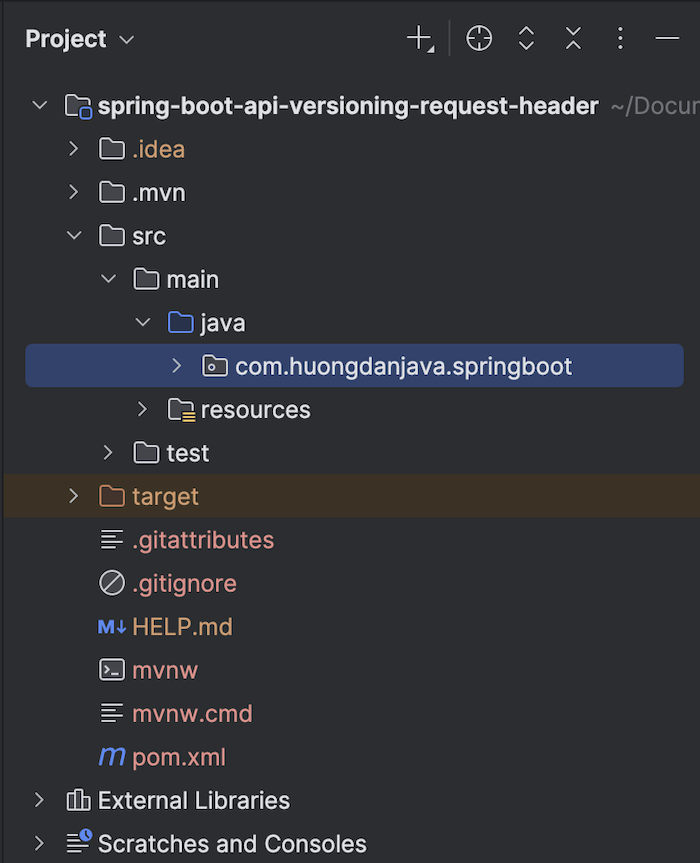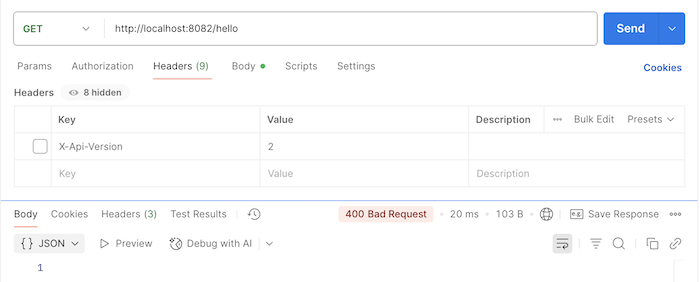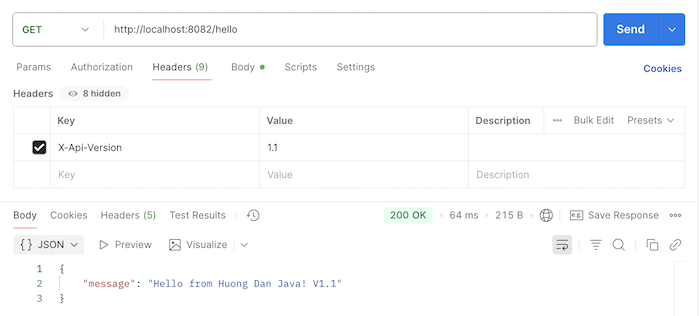API Versioning is a new feature of Spring supported since version 7, which helps us easily add a version for RESTful APIs in the request header, in the path parameter, in the media type parameter, in the query parameter, or a custom version resolver. In this tutorial, I will share with you how to enable API versioning for applications using the Spring framework and how to add a version in the request header for these applications!
First, I will create a new Spring Boot with Spring Web dependency as an example, as follows:

Please note that you must choose Spring Boot version 4 or later! Only Spring Boot version 4 or later uses Spring Framework 7.
I will create a new simple Controller as an example, with the following content:
|
1 2 3 4 5 6 7 8 9 10 11 12 13 14 15 16 17 18 |
package com.huongdanjava.springboot; import org.springframework.web.bind.annotation.GetMapping; import org.springframework.web.bind.annotation.RestController; @RestController public class HelloController { @GetMapping("/hello") public String hello() { return """ { "message": "Hello from Huong Dan Java!" } """; } } |
This controller currently only exposes a simple endpoint “/hello” and I have not defined a version for it yet, as you can see.
To enable versioning for this endpoint in the request header (meaning when requesting to this endpoint, we must pass the version information in the request header), you can:
- Add a configuration class that implements the WebMvcConfigurer interface and override the configureApiVersioning() method, as follows:
|
1 2 3 4 5 6 7 8 9 10 11 12 13 14 15 |
package com.huongdanjava.springboot; import org.springframework.context.annotation.Configuration; import org.springframework.web.servlet.config.annotation.ApiVersionConfigurer; import org.springframework.web.servlet.config.annotation.WebMvcConfigurer; @Configuration public class WebConfig implements WebMvcConfigurer { @Override public void configureApiVersioning(ApiVersionConfigurer configurer) { configurer.useRequestHeader("X-Api-Version") .setDefaultVersion("1"); } } |
- Or you can also use the property as follows:
|
1 2 3 4 5 6 |
spring: mvc: apiversion: use: header: X-API-Version default: 1 |
Here, I am configuring to use “X-Api-Version” as the name of the request header to pass the version to the endpoints.
The setDefaultVersion() method is used to specify the version for any request that has not declared a version!
Now, if I run the example application and request to the “/hello” endpoint without passing the version, I will get the “Bad Request” result as follows:

Because I have enabled versioning support, we have to pass the request header “X-Api-Version”, guys!
The result when I pass the request header “X-Api-Version” is as follows:

To specify the version for any endpoint, you can use the version attribute of the annotations @GetMapping, @PostMapping, …. For example:
|
1 2 3 4 5 6 7 8 9 10 11 12 13 14 15 16 17 18 19 20 21 22 23 24 25 26 27 |
package com.huongdanjava.springboot; import org.springframework.web.bind.annotation.GetMapping; import org.springframework.web.bind.annotation.RestController; @RestController public class HelloController { @GetMapping("/hello") public String hello() { return """ { "message": "Hello from Huong Dan Java!" } """; } @GetMapping(value = "/hello", version = "1.1") public String hello1_1() { return """ { "message": "Hello from Huong Dan Java! V1.1" } """; } } |
At this point, the value of the version attribute will be assigned to the value of the request header, and we can request to the endpoint with version 1.1 as follows:




